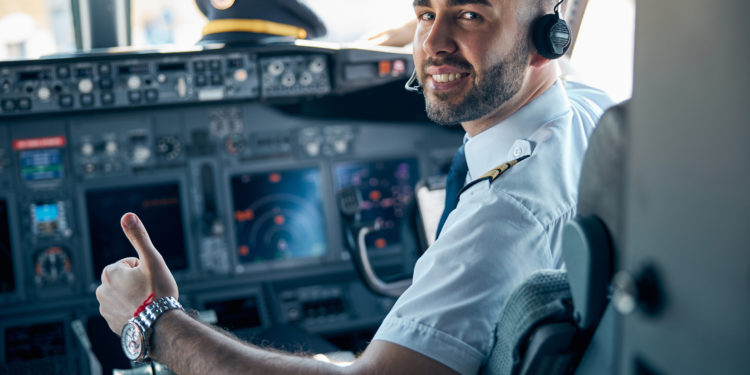Advertiser Disclosure: Eye of the Flyer, a division of Chatterbox Entertainment, Inc., is part of an affiliate sales network and and may earn compensation when a customer clicks on a link, when an application is approved, or when an account is opened. This relationship may impact how and where links appear on this site. This site does not include all financial companies or all available financial offers. Opinions, reviews, analyses & recommendations are the author’s alone, and have not been reviewed, endorsed, or approved by any of these entities. Some links on this page are affiliate or referral links. We may receive a commission or referral bonus for purchases or successful applications made during shopping sessions or signups initiated from clicking those links.
While pilots navigate this complex world, they’re not alone. Behind the scenes, a vital communication network keeps them connected to their ground support: dispatch. Pilots work closely with their dispatcher to ensure safety of flight and to get real time updates while in the air for the best rides and route of flight. This critical link ensures smooth operations, timely updates, and crucial assistance when needed. But how do pilots stay connected with their dispatchers while up in the air and flying around the world?
SATCOM: Your Phone Booth in the Sky
Think of a phone call that works anywhere on Earth, even over vast oceans or desolate deserts. That’s the magic of SATCOM. Utilizing orbiting satellites as signal relays, there is practically nowhere on earth or in the air that they don’t work. This is the quickest way to reach communication with the ground, just like a phone, they can pick up a handset and dial any number they wish and make an outbound call. However, it’s not cheap! Rates can vary, but it can cost $15 or more per minute. While you may think that’s outrageous, bouncing a phone call around the earth on satellites is not cheap.
HF: The Trustworthy Backup
While not the newest technology, HF radio waves have earned their place as a reliable backup. Bouncing off the ionosphere, they offer long-range communication even over vast distances with no ground based communications:
- Voice Communication Only: HF radio waves are incredibly long compared to VHF, thus they are susceptible to space weather, and when the sun is particularly active it can degrade the quality. Likewise, with how unreliable the signal can be, HF is really only good for voice communications and can’t transmit data like both VHF and satellites can.
VHF: The Local “Walkie-Talkie”
Imagine VHF as the “local call” for pilots. With a shorter range but clearer reception, VHF acts as the primary communication tool for pilots, air traffic controllers, and even local airport operations:
- Air Traffic Control (ATC): Pilots receive instructions and clearances for takeoffs, landings, and maintaining safe distances from other aircraft. This constant dialogue ensures the smooth flow of air traffic and prevents potential collisions.
- Short-Range Communication: Pilots can contact local airports, maintenance facilities, and other nearby pilots for various needs, from requesting assistance to reporting minor issues. It’s like having a local radio channel to connect with the immediate “neighborhood” around them.
ACARS: Text Messaging in the Skies
This digital messaging system transmits data over VHF frequencies (and with some aircraft by satellite), offering several advantages that go beyond simple voice communication:
- Automated Updates: Fuel levels, engine performance, and other critical information are automatically sent to dispatch at regular intervals. This real-time data stream keeps ground support informed and allows them to proactively identify and address any potential issues before they escalate. Imagine it as a constant health monitor for the aircraft, sending vital signs back to base for analysis and ensuring everything is running smoothly.
- Text-Based Communication: Pilots can send and receive brief messages with dispatch, reducing radio congestion and allowing for more complex information exchange. This is particularly useful for relaying technical details or requesting specific assistance. Think of it as a test message system for pilots, allowing them to send quick texts without cluttering up the busy airwaves with lengthy voice calls or spending lots of money to make a SATCOM call.
There is no one catch-all system, they all work in harmony to accomplish different tasks. And when inevitably one system fails, another can take its place and use as a backup communication source. Many aviation regulation bodies around the world mandate that you carry a minimum number of these communication sources to ensure flights can be reached if one of them happens to fail. For example, when crossing the North Atlantic, it is mandated that aircraft carry both HF and SATCOM based communication onboard.
Aviation relies on redundancy to maintain a safe operation, to the passenger if something like this fails you may never know. Just know that your pilots are using all of these communication options to stay connected to their dispatcher and air traffic control to get you to your destination.
Advertiser Disclosure: Eye of the Flyer, a division of Chatterbox Entertainment, Inc., is part of an affiliate sales network and and may earn compensation when a customer clicks on a link, when an application is approved, or when an account is opened. This relationship may impact how and where links appear on this site. This site does not include all financial companies or all available financial offers. Opinions, reviews, analyses & recommendations are the author’s alone, and have not been reviewed, endorsed, or approved by any of these entities. Some links on this page are affiliate or referral links. We may receive a commission or referral bonus for purchases or successful applications made during shopping sessions or signups initiated from clicking those links.











